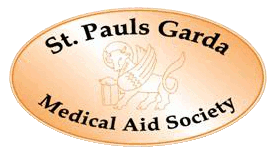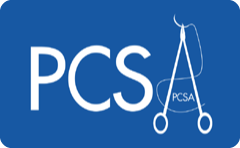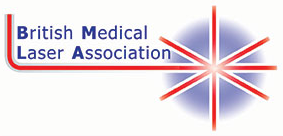 Download this information as a PDF
Download this information as a PDF
What is urticaria and angio-oedema?
Urticaria is a common illness affecting up to 20% of people (one in 5 people) at some point in their lives. Urticaria presents with itchy raised skin reactions known as weal’s (also known as hives or a nettle stinging like rash) that may be round or ring-shaped and may join together. The hives come and go within hours. Hives can also appear as raised lines after scratching. They can appear anywhere on the skin. Individual hives typically disappear of their own accord within 24 hours without a trace but can recure days or weeks later in another part of the body. Angio-oedema causes swelling of the lips or mouth and occasionally occurs with urticaria. These swellings often take longer to clear.
The most common form of urticaria is called spontaneous urticaria. Spontaneous urticaria is usually divided into ‘acute’ and ‘chronic’ forms. In ‘acute’ urticaria, the episode lasts up to six weeks. Chronic or long-lasting urticaria lasts for six weeks or more.
What causes urticaria?
Urticaria is caused by the release of histamine and other chemicals from cells in the skin called mast cells. Urticaria is often thought of as an allergy but, in fact, it usually results from histamine release from mast cells due to other reasons. Allergens in food, or medicine may sometimes cause acute urticaria. Children may react to different foods, including milk, nuts, fruits or shellfish but this is much less common in adults. Bee and wasp stings can cause acute urticaria.
A specific trigger for urticaria is never found in up to 50% of adults with chronic urticaria. The most common trigger when found are drugs and medications. Chronic spontaneous urticaria may be autoimmune which means the patient’s own antibodies release histamine from mast cells for no obvious reason. Tests for autoimmune urticaria are not routinely available and generally do not alter treatment. When a cause cannot be found, it is called ‘idiopathic’. Hives may be set off by a physical trigger, such as cold, pressure or friction. This type of urticaria is called “inducible” because hives are induced by a specific stimulus and are not spontaneous.
Some people with urticaria have other underlying conditions, such as thyroid disease or other autoimmune disorders.
If you suspect that a medicine may have caused urticaria, you should inform Dr Buckley. Almost any medicine can cause urticaria, but painkillers such as aspirin, ibuprofen and other non-steroidal anti-inflammatory drugs, codeine, some antibiotics, and vaccinations are most likely offenders. Angio-oedema without hives may be caused by a group of drugs called ACE inhibitors used to treat high blood pressure.
What are the symptoms of urticaria and angio-oedema?
The main symptom of urticaria is itch. Although urticaria may be very distressingmbecause of the itching and its appearance, it generally has no direct effect on general health. However, it can cause a large impact on quality of life, including mood, and lead to problems with work and relationships. Rarely, angio-oedema may affect the tongue or throat. This can be alarming but is only life-threatening when angio-oedema is due to hereditary angio-oedema or ACE inhibitor medication.
Is urticaria hereditary?
The vast majority of urticarias are not hereditary
How is chronic urticaria diagnosed?
Usually its appearance, or a description of it, will be enough for your doctor to make the diagnosis. There is no special test that can reliably identify the cause of urticaria, and most people with spontaneous urticaria who respond well to antihistamines do not need any tests at all. Routine allergy tests are not usually necessary. Bogus allergy tests such as the York Test, the Fitzwilliam Test, hair analysis, Vega tests or
Food Test, some of which are carried out in health food shops, pharmacies, on-line via post or by alternative practitioners are unhelpful, confusing and a waste of money. They can sometimes add to the misery by restricting food for no scientific reason which may cause nutritional deficiency and makes eating out an ordeal. If you want accurate, validated allergy tests talk to Dr Buckley (but don’t be disappointed if they are negative).
In a small percentage of people, foods, food colouring agents and preservatives appear to worsen urticaria, and it is occasionally possible to identify these by keeping a food diary. These substances can be left out of the diet to see if the condition improves, and later reintroduced to confirm whether they are the cause of the urticaria or not. However, as urticaria is such a fluctuating disease, this is not always accurate and will not always show what is causing the problem.
Can urticaria be cured?
The aim of treatment is to suppress the symptoms of the condition until it becomes better naturally rather than to cure it. In about half of the people affected by chronic spontaneous urticaria, the rash lasts for 6-12 months, and then gradually disappears. It can however last considerably longer in other people. In any one individual the course of urticaria is unpredictable
What is the treatment of urticaria?
- Antihistamine tablets block the release of histamine and reduce the itch and rash in most people. If urticaria occurs frequently, antihistamines should be taken regularly every day. There are many different types, including non-sedating and sedating antihistamines. They are known as H1 antihistamines. Most should be avoided in pregnancy. The newer non-sedating antihistamines are far more effective than the older type sedating antihistamines such as “Piriton” and “Phenergan” which should be avoided. You and your doctor may need to try different non-sedating antihistamines to find a regime that suits you best. Most work within 30 minutes and last 24 hours. It has become common practice to increase the daily dose of non-sedating H1 antihistamines up to two to four times the recommended dose if necessary to control symptoms but these high doses should be only be tried under the supervision of Dr Buckley and these high doses should be avoided if you have heart disease or are on certain medications that interact with antihistamnes. Sometimes we will recommend two different antihistamines together. They can be taken for as long as the urticaria persists. Even the non-sedating types can occasionally make people sleepy, especially with higher doses. As with all medications there can be side effects; the balance of risk and benefit needs to be considered when taking these and all treatments. Some can be bought over the counter and are the same as those used to treat hay fever. The new non-sedating antihistamines are considered very safe but discuss with Dr Buckley and/or pharmacist any potential side effects and possible interactions with other medications you are taking.
Examples of different types of non-sedating, new generation anti-histamines:
| Generic name | Brand name | Prescription | Features |
| Levocetirizine | Xyzal | Yes | More potent |
| Fexofenadine | Telfast 180 | Yes | Good for urticaria |
| desloratadine | Neoclarityn | Yes | Long duration |
| Bilastine | Drynol | Yes | Also for hay fever |
| Cetrizine | Histek, Zirtek | No | Quick onset |
| Loratadine | Clarityn | No | Safe in pregnancy |
- A different type of antihistamine called H2 antihistamines (e.g. cimetidine, famotidine and ranitidine) that are usually used to treat stomach acid symptoms, can be added if standard H1 antihistamines are insufficient on their own.
- If antihistamine tablets are not helpful, your doctor may recommend other medicines, including montelukast, that is usually used as an add-on treatment of asthma.
- Oral steroids can occasionally be given as rescue treatment for severe flares of acute and chronic urticaria but are generally not necessary; their potential side effects usually outweigh the benefits in this condition. Non-sedating antihistamine tablets usually work faster and are safer than oral steroids.
- Treatments that act by suppressing the immune system (e.g. ciclosporin) may be beneficial for the most severely affected people not responding to the treatments outlined previously, especially those with autoimmune urticaria.
- Very rarely injections of adrenaline (epinephrine) may be required if there are breathing problems caused by angio-oedema or anaphylaxis.
- A biological injection called omalizumab (”Xolair”) has been approved for severely affected chronic spontaneous urticaria patients in whom other treatments have been ineffective. This is only available in specialist clinics.
Self-care (what can I do?)
- Do not take aspirin, ibuprofen (and other non-steroidal anti-inflammatory drugs) or opiates, such as codeine since these medicines may aggravate urticaria.
- Avoid anything that may worsen urticaria, such as heat, tight clothes, and alcohol. Triggers vary between individuals.
- Avoidance of specific foods, colouring agents and preservatives may occasionally be helpful in some people.
- Seek medical advice urgently if you are having problems with breathing or swallowing.
Other types of urticaria:
In some patients, clear trigger factors for urticaria can be identified although the cause remains unknown; these are called inducible urticarias. There are several types of inducible urticaria.
Inducible urticarias: hives may be triggered by heat, cold, friction, pressure on the skin and even by water. The hives usually occur within minutes, and last for less than one hour (except delayed pressure urticaria, which is delayed in onset and lasts for hours at least). Physical urticarias often occur in otherwise healthy young adults but can affect any age. Some patients suffer from more than one type of urticaria;
they include the following types:
- Symptomatic dermographism (“skin writing”). In this type, itchy hives occur after friction, such as rubbing or stroking the skin. Hives and red
marks often appear as lines at the sites of scratching and generally last for less than an hour. - Cold urticaria. This is triggered by exposure to cold, including rain, wind and cold water, causing itchy hives in chilled areas. Swimming in cold water may cause extensive hives with a risk of fainting and should be avoided. Patients should report cold urticaria to medical personnel before operations so they can be kept warm during the procedure.
- Solar urticaria. This is rare. Redness, itching and hives occur on the skin immediately after exposure to sunlight, and last for less than one hour after avoidance of exposure.
- Aquagenic urticaria. This is extremely rare. Small hives occur on the skin at the site of contact with water, usually on the upper part of the
body. - Delayed pressure urticaria. Urticaria develops where pressure has been applied to the skin, for example from tight clothes or from gripping
tools. Usually the swelling develops several hours later. It can be painful and lasts longer than a day. People with delayed pressure urticaria nearly always have spontaneous urticaria as well. - Cholinergic urticaria – This occurs under conditions that cause sweating, such as exercise, heat, emotional stress or eating spicy food.
Within minutes, small itchy bumps with redness appear, usually on the upper part of the body but they may be widespread. The hives last for
less than an hour, but in severe cases may join together to form larger swellings. Antihistamines usually help and my be necessary before going to the gym or sports. They may be taken an hour or two before a triggering event (e.g. exercise) if these are infrequent. - Contact urticaria – Various chemicals, foods, plants, animals, and animal products, can cause hives within minutes at the site of contact. These do not last long. Some of the more common causes are eggs, nuts (e.g. peanuts), citrus fruits, rubber (latex) and contact with cat and dog saliva. Reactions are occasionally severe, for example after contact with rubber and peanuts in very sensitive individuals.
Other illness that can look like urticaria or angio-oedema:
- Angio-oedema without hives or a rash – angioedema occurring without hives can be due to medicines (e.g. aspirin, ACE inhibitors).
- Hereditary angio-oedema – this is a very rare form of angio-oedema, which usually runs in families because it is due to a genetic mutation. Patients have intermittent swelling of the face, mouth, throat, and sometimes of the gut, leading to colic but they have no rash. It is diagnosed by special blood test and requires different treatments.
- Urticarial vasculitis – a very small percentage of people with an urticarial rash develop hives that last longer than 24 hours. These may be
tender and occasionally bruise. People affected with this condition may feel unwell with joint and stomach pains. Antihistamines are not very
helpful but other medicines that help inflammation can be used to treat vasculitis. - Severe allergies. People who have a severe allergic reaction to peanuts, insect stings, drug allergies , etc, often have an urticarial rash as one of the first symptoms. This is in addition to other symptoms such as severe angio-oedema, breathing difficulties, collapse, etc. A severe allergic reaction is called anaphylaxis. This is a medical emergency and if it occurs outside a medical setting phone for the ambulance and tell them it is an “Anaphylaxis reaction”. Note: most people with acute urticaria feel well and do not get anaphylaxis.
Where can I find out more about urticaria?
Links to patient support groups:
Allergy UK: www.allergyuk.org
Web links to detailed leaflets:
https://dermnetnz.org/topics/chronic-spontaneous-urticaria
https://www.allergyuk.org/types-of-allergies/urticaria-hives-other-skin-allergy/














